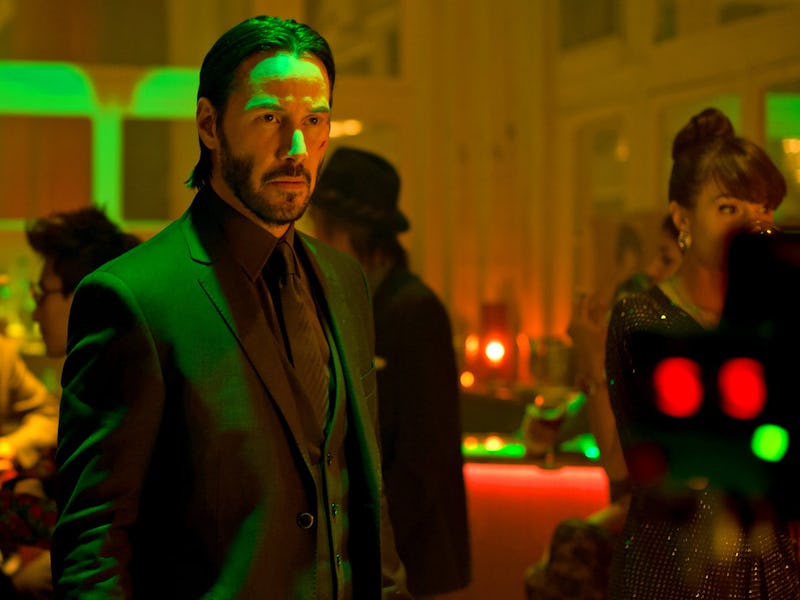Keanu Reeves’ star was fading. Then, John Wick happened.
Beware the Baba Yaga.

The best way to define a character is through their actions. Most good movies let their characters’ deeds speak for themselves; if our hero intervenes to stop a robbery, they don’t need to turn to the camera and call themselves a heroic risktaker. There are, however, other ways to establish who a character is within their fictional world, like letting other characters react to their presence.
No film pulls off that trick as well as John Wick. The 2014 action film reaches the end of its first act when Viggo Tarasov (Michael Nyqvist), the former boss of Keanu Reeves’ Wick, discovers that his son has recklessly made an enemy of the former assassin. Rather than brushing the news off, Nyqvist’s Tarasov tells his son that he’s already dead. In the film’s remaining minutes, viewers come to realize just how right he is.
Its two sequels, 2017’s John Wick: Chapter 2 and 2019’s John Wick: Chapter 3 — Parabellum, upped the ante to offer even more blood-soaked thrills than their predecessor. Together, the films make up the greatest action movie trilogy of the century so far. All three are leaving HBO Max on January 31, and you need to catch them first.
What started as a simple story about a man trying to avenge his dog’s murder has grown into something much more expansive, as the franchise’s sequels have delved further and further into its unique underground world of elite assassin networks that operate by unbending rules. In doing so, the series has transformed into a franchise that’s not only thrillingly violent but also delightfully surreal.
The series has followed Reeves as he avenged his dog, took out many of his fellow assassins, and fought to survive in a world where his enemies greatly outnumber his friends. Along the way, it’s delivered more than its fair share of inventive and well-choreographed action sequences, including a train standoff in Chapter 2 that’s tinged with a fun, screwball energy, and a chase sequence in Chapter 3 that follows John as he tries to escape from a group of sword-wielding motorcyclists by riding away on a horse.
As the odd circumstances of those sequences suggest, Reeves and director Chad Stahelski have managed to keep the Wick series’ playful spirit alive. That’s been true even in the moments — most of which occur in Chapter 3 — when the endless cycle of violence that John has been caught up in is made to feel exhausting and pointless. All three films managed to feel both cathartically violent and narratively brutal, which isn’t a feat many action movies can achieve.
With his performance as John Wick, Keanu Reeves has cemented his place as an all-time action star.
At the heart of the series is Keanu Reeves’ intense and completely committed performance. As John Wick, Reeves has been able to use every element that’s made him such a memorable performer for so many years. He’s capable of pulling off many of his own stunts and fight sequences, while John’s personal anguish has given Reeves the chance to breathe real humanity into a ruthless killer.
It’s rare for a franchise to improve visually and emotionally as it gets bigger and more action-packed. But the John Wick franchise, like its hero, refuses to run out of steam. Sometimes, bigger really can mean better, and it’s worth remembering why before the fourth installment tries to elevate the series again.
The John Wick trilogy is streaming on HBO Max until January 31.
This article was originally published on